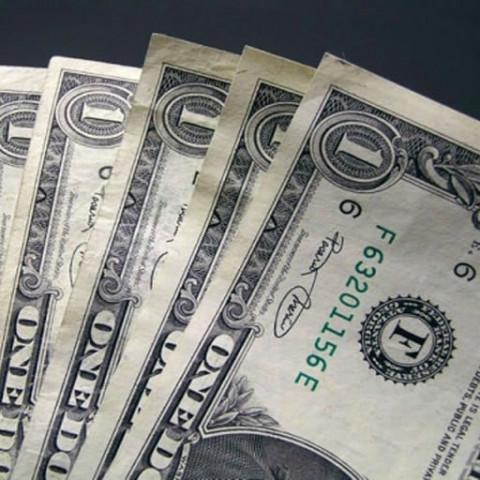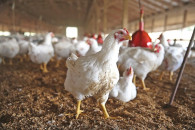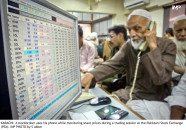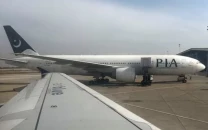High dollar value fueling inflation
Rupee devaluation increases cost of imports, resulting in higher fuel and food prices

The persistent high value of the US dollar against the Pakistani rupee continues to exert significant pressure on inflation within the country. Economists widely identify the exchange rate as a primary factor driving price increases.
Due to this critical factor, the continuous drop in inflation, ie, 0.3% in April 2025 against 0.7% in March 2025, is not helping the federal as well as provincial governments to bring down prices of essential commodities, even the local produce did not match the price tag as it was a couple of years ago.
"A weaker rupee directly increases the cost of all imports priced in dollars," said economist Osama Siddiqui. This includes essential items like medicines, industrial inputs and food Pakistan does not produce sufficiently. When the rupee falls from, say, 230 to over 280 per dollar, the landed cost in rupees for these goods rises substantially.
"This cost-push effect is a major contributor to inflation, easily accounting for a significant portion of the price surge in imported goods. Recent data shows the rupee is trading consistently above 280 per dollar, compared to approximately 175 two years ago," he added.
This dollar strength critically impacts petroleum prices, as Pakistan imports roughly 80% of its oil needs. "The kerb rate and official exchange rate directly influence the rupee cost of importing oil," said Muhammad Fareed, a money exchanger.
A rise in the dollar rate translates very quickly into higher fuel prices at the pump. Higher petroleum costs then cascade through the economy via increased transportation expenses. Diesel and petrol are fundamental to logistics, said transport operator Riaz Hussain. "A 20% increase in diesel significantly raises the per-kilometre operating cost for transporting goods. This surcharge is inevitably passed on, inflating the prices of everything moved, from food staples to manufactured goods," he added.
Economists estimate that fuel and transportation costs constitute about 35% of Pakistan's Consumer Price Index (CPI), directly linking fuel hikes to overall inflation, which peaked at over 38% last year. Global trade dynamics further complicate the situation. Disruptions in international supply chains directly increase the cost of Pakistan's essential imports like wheat, pulses and edible oil.
"Events like the Red Sea tensions force longer shipping routes, doubling or tripling freight charges in some instances," Siddiqui added. "These are dollar-denominated costs. Any global supply chain issue or increased shipping risk translates into higher import bills for Pakistan, requiring more dollars and further pressuring the exchange rate and domestic prices." Geopolitical uncertainty, particularly surrounding major economies, adds another layer of pressure. Financial analyst Saad Mahmood pointed to concerns about potential policy shifts.
"Global markets react to uncertainty and right now uncertainty is at its peak. The ongoing conflicts between, Russia, Ukraine, Israel and Hammas, with another threat of Iran being attacked in case they failed to reach any nuclear deal; and the Trump's trade war with China, European Union, etc, all are adding to the uncertainty. Capital often flows out of emerging markets like Pakistan towards perceived safer assets like the US dollar during such times."
This reduced dollar supply within Pakistan makes the currency scarcer and more expensive. "When major international news breaks, especially involving the US or conflicts, demand for dollars often surges locally as people seek security, pushing the exchange rate up further," Mahmood said.
The combined effect of the high dollar exchange rate, its impact on fuel and transportation, global trade disruptions and geopolitical uncertainty creates a challenging environment for price stability in Pakistan. The rising cost of essential imports, amplified by expensive transportation, continues to translate into higher prices for consumers across the board.
To reverse the dollar's inflationary impact, Pakistan must boost exports and reduce import dependency, economists advise. "Increasing exports like textiles, IT services and agricultural goods is crucial to earn more foreign exchange," Siddiqui said.
Simultaneously, promoting local manufacturing of essentials such as edible oils, pulses and industrial inputs would lessen the need for dollar-funded imports. Attracting foreign investment and securing stable financing to build reserves are vital to stabilise the rupee.
Adequate reserves instill market confidence and reduce speculative pressure on the dollar while long-term fiscal discipline and policy consistency are essential to break the cycle of currency-driven inflation. "Right now remittances are the only window which is increasing decently, however, countries cannot only survive on this source of income, the world has entered into an era of artificial intelligence, we as a country must focus on this crucial aspect and catch the prosperity trains, which we have missed previously," he added.




















COMMENTS
Comments are moderated and generally will be posted if they are on-topic and not abusive.
For more information, please see our Comments FAQ